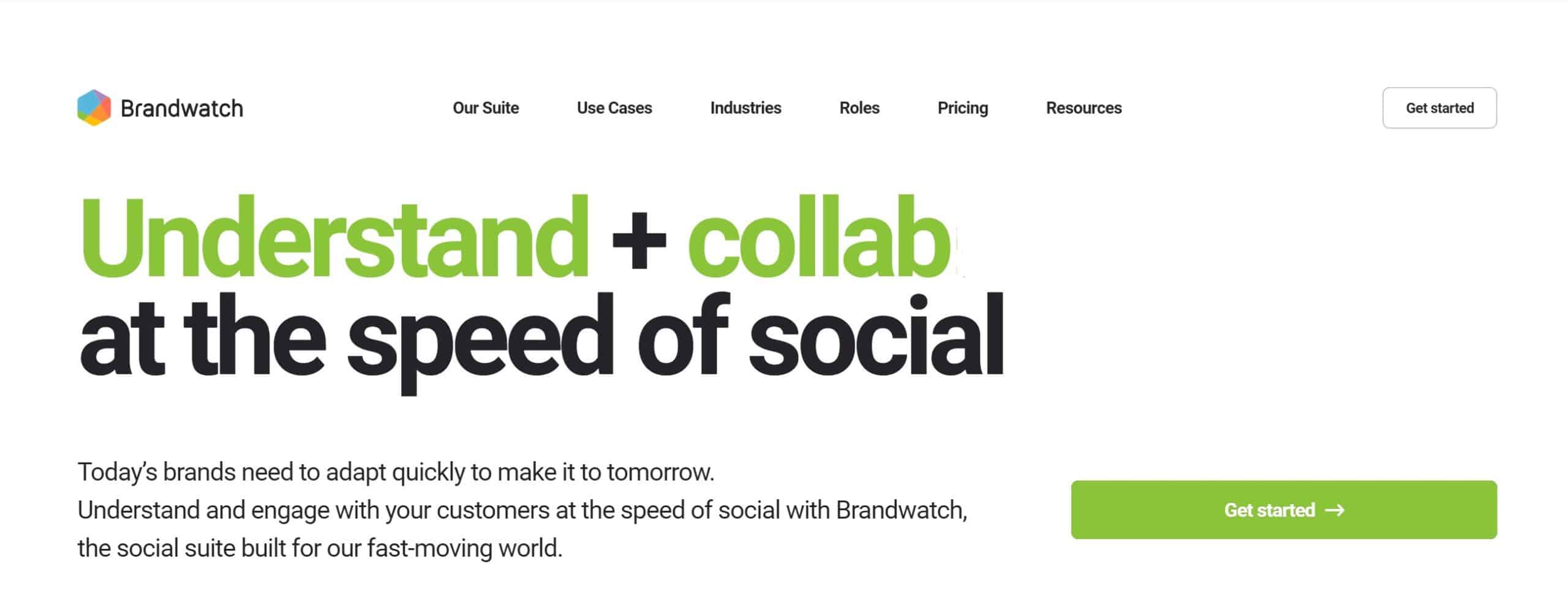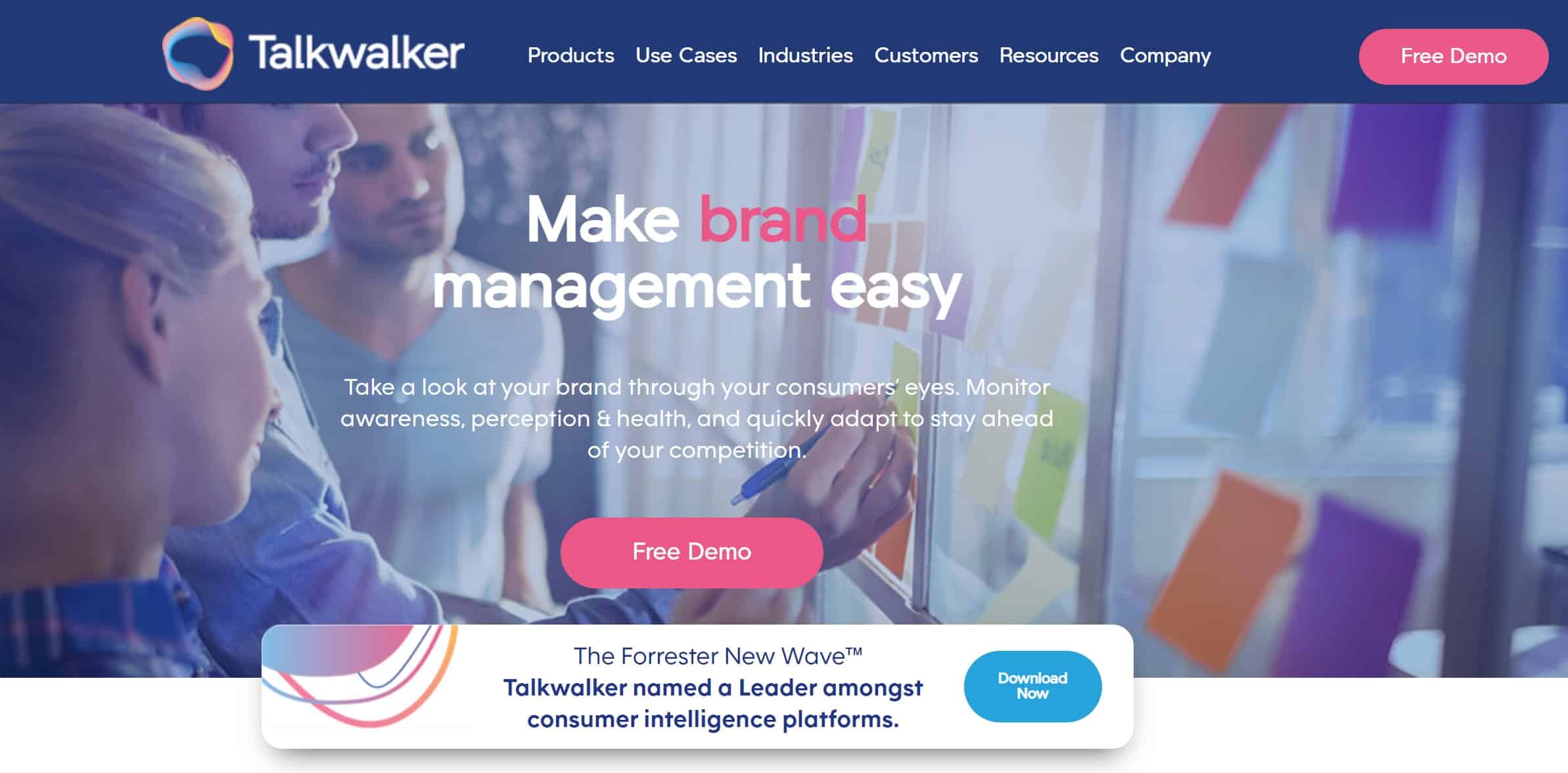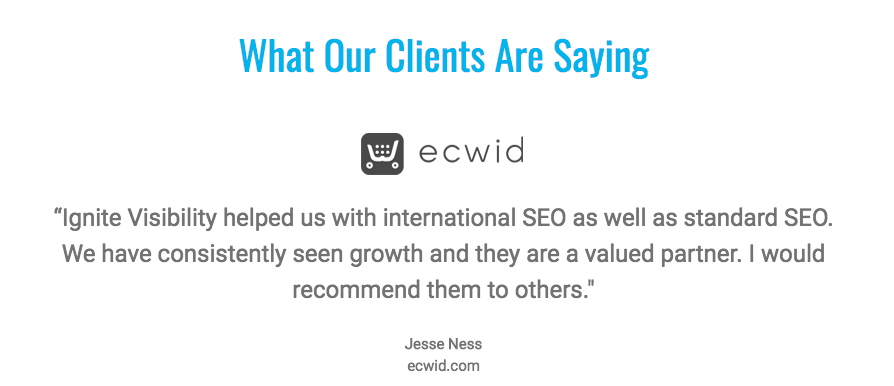
Social media listening is a crucial part of modern marketing.
Over 4 billion people will use social media by 2025. You’re losing money if you don’t listen to—and act on—what they’re saying.
So now, we’ll explain why social listening is important, how to do it, and how to use it to guide your content strategy.
What is Social Listening?
Social media listening is finding mentions of your brand on social media, studying them, and acting on them. It covers the micro (likes, comments, etc.) and the macro (general sentiment).
Over half of marketers used social listening to gauge consumer sentiment during the COVID outbreak in 2020. Its immense value became clear, and its popularity continues to grow.

Social listening is a two-step process:
- Monitoring social media
- Acting on the data found
Step one by itself is social monitoring, but with step two, it becomes social listening.
Social Monitoring vs. Social Listening
Social listening’s often confused with social monitoring, but they’re different.
Social monitoring is data collection. It gives you the “what”—things like:
- Industry trends
- Brand mentions
- Engagement metrics (likes, comments, etc.)
- Competitor mentions
- Related hashtags
This is great data for analytics, but it doesn’t tell the “why” behind the stats. That’s where social listening comes in.
Social listening goes beyond raw data to find consumer sentiment. Rather than just counting brand mentions, you study conversations to uncover feelings.
For example, say a SaaS company releases a big new update. With social monitoring, the company only checks for engagement stats.
But with social listening, they study discussions to find out how users like the update. Then, they use the content of those discussions to improve their brand.
It’s easy to see how social listening can make a crucial difference.
Imagine the update has a UI change users hate, and Twitter posts tip the SaaS brand off. They’d be clueless if they only checked statistical metrics (social monitoring).

Why is Social Listening Important?
It’s common for marketers to focus on raw numbers when studying social media data. For most companies, likes, retweets, and comments are all that matter.
Those metrics are important, but they overlook customer sentiment. Social listening lets brands understand the “why” behind every brand mention.
This directly translates into actionable insights. It’s all about using social data to discover ways to improve your business (marketing, customer service, etc.).
1. Improved Customer Service
A third of customer complaints go unanswered, mostly on social media. With social listening, brands can catch and respond to customer complaints they’d miss otherwise.
People who complain about your service are usually not beyond saving. Giving quick responses to social media issues lets your customers know you care.
You’ll also see where your service has the most problems as you track negative comments. To give an extreme example, McDonald’s addressed its always-broken ice cream machines after they became memes.
2. Find Influencers for Collaborations
90% of marketers agree influencer marketing is effective. And with social listening, finding the right influencers for your niche is easy.
With in-depth demographic data, you can understand each influencer’s audience. Target based on age, life stage, preferences, interests, and more with extreme accuracy.
This makes for ultra-effective influencer campaigns speaking to your most ideal audience possible. With social listening, influencer marketing becomes more profitable than ever.
3. Understand Your Target Audience
By keeping in tune with social media, you can uncover the habits, interests, and problems of your target audience.
Think about it: if you have a problem, where do you go to vent? Probably Facebook, or maybe Twitter.
Or if you discover a new product or place that you love, where do you go to rave? Again, probably your favorite social media channel.
In that way, you can use social listening to track conversations around keywords related to your business to see what people are saying and how they’re feeling about them.
It will also help you uncover any potential pain points.
Again, as you monitor those keywords, you’ll find the biggest problems and complaints your audience is facing.
Then, you can use pain points to inform your content strategy, product offerings and descriptions, and even your overall value proposition.
4. Better Understand How People Feel About The Competition
This is an enormous benefit of social listening.
Because not only do you want to understand how your audience feels about your brand, you want to have a grasp on how they feel about those you’re competing with.
When using social listening, you’ll be able to monitor what people are saying about those competitors and gain an understanding of where your brand fits in terms of customer sentiment in your industry.
Do people feel good about your business? If yes, then great.
But if you find they react more positively to a competitor, it’s time to investigate where the disconnect is and improve the general attitude around your brand.

Best Social Media Listening Tools
Social listening is impossible without dedicated software. Your brand’s listening strategy begins with picking the right tool.
Remember, the amount of data social networks make public limits the use of all tools.
They can’t track private channels like Slack and invite-only Facebook groups. There are some exceptions, but only on a 1:1 basis with tailored listening options.
That’s not to say listening tools aren’t powerful. They use public-oriented platforms like Reddit and Twitter to give exceptional consumer insight.
So with that in mind, here are the best social listening tools this year:
1. Brandwatch
Brandwatch is a social media management platform with impressive listening tools. Their brand tools give a top-down analysis of your company’s image.
Using AI, Brandwatch lets you play offense with your reputation.
Imagine your brand appears in a Tweet thread of companies that haven’t made a clear stand on a social issue. Brandwatch finds these risks and lets companies respond to possible brand damage fast.
And Brandwatch is flexible. You can track brand names, topics, keywords, and more with advanced filters.
Other Brandwatch perks include:
- Simple and easy interface
- Content marketing workflow
- Trend prediction
- Broad third-party integration
These features and more make Brandwatch a next-gen social media listening tool.
2. Talkwalker
Talkwalker’s a tool for keeping brands informed about their user base. Its consumer insight tools make for potent social media listening.
Talkwalker lets you measure brand-related conversations across the web. With text, image, video, and audio analytics, you can see how people talk about your brand in real-time.
It’s also a tool for consistent content success.
Talkwalker gives deep insight into customer journeys by connecting third-party data. Using that knowledge, you can develop a content strategy tailored to your customers’ concerns.
And like Brandwatch, Talkwalker does thorough market research. It’s not just a social listening tool—it’s a brand growth platform.
3. Mention
Social media listening is Mention’s specialty. Mention scans the web for conversations—not only to detect but also to understand them.
Its social media data comes alongside impressive analytics tools. Their tools let you filter out irrelevant mentions, like job offers related to software.
Mention also lets you “zoom out” on your presence by showing your mentions in the context of larger trends. And with visualized reports, understanding Mention data is easy for anyone.
It’s also remarkably affordable compared to other social listening tools. Mention even offers a free plan covering eight social networks.
4. Hootsuite and Hootsuite Insights
Another social listening tool to take note of is Hootsuite Insights.
Hootsuite is primarily known as a social media scheduling platform and turns out, that’s one of its biggest advantages in the listening arena.
What’s great about Hootsuite Insights is that because it doubles as a scheduling tool, you can integrate the feature, which allows you to respond back ASAP when you receive a mention.
Because of that, it makes Hootsuite an ideal tool for our purposes in this article.
If you’re using regular Hootsuite, just click Add Stream at the top of the page, and select Mentions.
This column will be updated every time your brand receives a mention. So as soon as it happens, you’ll be able to spot the mention, who it’s from, and reply accordingly.
Hootsuite Insights takes things a step further. With it, you can monitor overall sentiment around your brand and be notified quickly of any unusual spikes in volume or sentiment.
This is especially handy if you happen to receive a bad review or complaint that suddenly goes viral or earns a large of comments – it’s the kind of thing you need to handle, fast.
There are plenty of other tools that allow you to keep tabs on your mentions around the web.
Keyhole is especially useful for tracking any hashtags relevant to your business, while a tool like IFTT will help you follow any blogs that may mention your brand.
How to Put Social Listening Into Action
You’ve already taken the first step by choosing a social listening tool. Once ready to move forward, follow these steps:
1. Establish Your Goals
Effective social listening needs defined goals. If your brand doesn’t have direction, social data is useless.
Examples of social listening goals include:
- Improving customer service
- Studying trends to decide on content strategy
- Your SaaS customers’ thoughts on a new update
- Track your competitors’ criticism to ensure your product provides what’s lacking
Social listening goals can be broad or specific. In the end, what matters is tangibly improving your brand.
2. Determine What to Measure
You won’t need all the data social listening collects.
While some brands track several things, others need only one type of social listening (like negative brand mentions). Ultimately, you need data based on the goal you set above.
For example, imagine you’re trying to improve your brand’s customer experience. You’d want to monitor:
- Pain points: Problems customers are complaining about
- Sentiment: Consumer opinions on your brand
- Mentions: How often your brand is mentioned, and in what context
Each of those metrics provides actionable insights for improving customer service.
Say you found social users complaining about your brand’s live chat. You could contact them, uncover their issues, and win them back—all improving your customer experience.
3. Start Gathering Data
With concrete goals—and the data to achieve them—it’s time to start social listening. Using your listening tool, watch the data you’re interested in (as mentioned in step two).
And as your mentioned data comes in, respond to customers directly.
For example, Firefox’s support handle is always ready to respond to user issues on Twitter.

Responding to brand mentions lets you assist customers while learning about their experiences.
4. Start Making Adjustments According to Data
As data comes in, you’ll notice opportunities for your brand to improve. Don’t hesitate to start making adjustments—there’s no need to wait for more feedback.
5. Assess Results Against Goals
Having collected data and used it to shape decisions, the next step is to study the results. Timeframes aren’t set in stone, but mid-to-long-term will be more insightful.
Whatever you choose, you’ll need to assess key metrics against your stated goals. Depending on what your goal was, your key metrics will vary.
Say the goal of a social listening campaign was to increase brand awareness. In this case, the most valuable metrics would be:
- Social impressions
- Website visits
- New followers
- Social mentions
A successful brand awareness campaign will show a link between the start of social listening and an uptick in those metrics.
How to Use Social Listening to Build Your Content Strategy
You can find exactly what content your audience wants with social listening. It lets you create hyper-relevant content by listening to countless conversations at once.
Here’s how to make the most of it:
1. Set a Goal
Before moving forward, establish the goal of your content strategy. You’ll need it to:
- Guide your content efforts as they progress
- Measure your efforts against a desired outcome
Examples of content strategy goals include:
- Gain email subscribers
- Reduce customer churn
- Increase leads generated from content
- Share customer success stories
- Build brand authority
- Increase brand awareness
Make sure your goals are specific enough to measure the impact of social listening. Something too simple like “increase sales” will be hard to attribute.
2. Gather Data
Now, use social listening to gather audience data. Look for things like:
- Demographics: Who’s discussing your brand?
- Pain points: Issues customers complain about
- Popular conversations: What topics come up most often about your brand?
- Biggest Influencers: Who are the people your audience sees as authorities?
- Platforms: Where are your brand mentions taking place?

3. Interpret Information
It’s time to turn gathered data into actionable insights. Start by asking these questions:
- Has this data confirmed something you’ve seen from another source?
- Has this data changed your thinking? Does it challenge past beliefs?
- In what ways could this data change how you create content?
Answer these questions in the context of your original goal.
For example, you may have thought writing advertising content would boost your SaaS brand authority. But social listening revealed that your prospects are most interested in SEO.
4. Create Your Content Strategy
All the previous steps come together to create your content strategy. Use the data you assessed to achieve your established goal.
For example, imagine you’re a customer service SaaS working to increase inbound leads.
Social listening shows chatbot content gets the most mentions by your audience. Also, many influencers said chatbots are the most important part of modern customer service.
In response, you write blog articles aimed at businesses looking for chatbot solutions. You plug in your own chatbot in the content, which creates leads for your SaaS.
This example shows how social listening drives informed content strategies. With your finger on the pulse of your audience, all guesswork disappears.
Reacting to Social Sentiment
Whenever someone mentions your brand on social media, they are expressing either:
- Positive sentiment: Happiness and satisfaction with your product or service
- Negative sentiment: Anger and frustration with your product or service
Here’s how to handle both:
How to React to a Positive Sentiment
Positive sentiment is great news for a brand, but there are a few ways to make the most of it.
First, respond to the customer in some way. Thank them for their praise, or better yet, ask for a review.
A quick reply like, “Thanks so much! Would you mind leaving us a review on [platform]? It really helps!” turns every positive mention into a productive opportunity.
How to React to a Negative Sentiment
Negative feedback happens to even the best brands. While you can’t stop criticism, you can control your response.
Here are some tips for handling negative sentiment:
- Don’t ignore it
- Reply quickly
- Avoid automated responses
- Always be polite
- Apologize sincerely
- Make honest promises only
- Move it into a private channel (DMs, Email, etc.)
- If you’re not at fault, kindly explain why
- Learn from the feedback
In May of 2022, Delta responded to negative feedback in the worst way possible:

But this isn’t a failure of policy. Delta’s customer service is usually attentive and personalized.
Instead, it was a failure to keep their social media team up to standard. Remember: your feedback policy is only as good as the person using it.
Wrapping Up Social Media Listening
Social listening can be extremely valuable to brands – you just have to know to use it.
One of my favorite ways is to use social listening to improve your brand image or reputation.
If the sentiment is good, you can leverage it to find positive opportunities for your brand.
If it’s bad, you can still recover gracefully – and even improve your image by dealing with it quickly and effectively.




